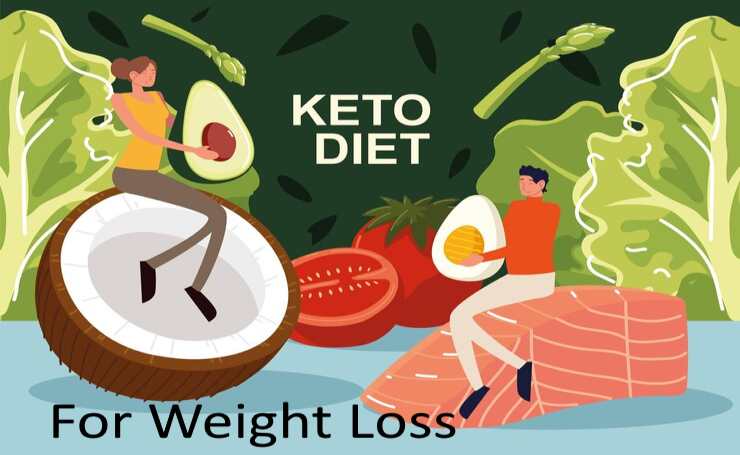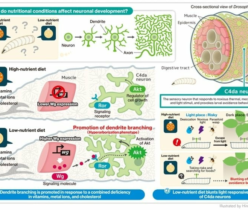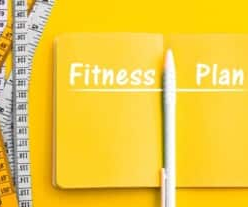The Keto Diet for weight loss, also known as the ketogenic diet, has gained popularity as an effective way to lose weight. But how does it work?
Let’s delve into the science behind it and explore the mechanisms that contribute to weight loss on a keto diet.
Keto Diet and Fat Burning
The keto diet is a high-fat, low-carb eating plan that puts your body into a metabolic state known as ketosis. By drastically reducing your carb intake and increasing your fat consumption, you force your body to switch from using glucose as its primary fuel source to burning fat for energy. As a result, your body breaks down stored fats into molecules called ketone bodies, which are then used as fuel.
Decreased Insulin Levels
Carbohydrates are known to spike insulin levels. When you limit your carb intake on a keto diet, your insulin levels decrease significantly. This is important for weight loss because insulin is a hormone that regulates fat storage. By keeping insulin levels low, the keto diet helps prevent excess fat accumulation and promotes fat burning instead.
Keto Diet for Weight Loss: Reduced Appetite
One of the reasons the keto diet has been successful in weight loss is its ability to control hunger and reduce appetite. The high-fat content of the diet helps keep you feeling fuller for longer periods, leading to a natural reduction in calorie intake. Additionally, ketones themselves have been found to have appetite-suppressing effects, further supporting weight loss efforts.
Increased Fat Metabolism
A key advantage of the keto diet is its ability to enhance fat metabolism. When you’re in ketosis, your body becomes more efficient at burning fat for energy. This occurs because your liver produces ketones from fatty acids, signaling to your body to prioritize fat breakdown and utilization. As a result, stored body fat is tapped into and used as an energy source, leading to weight loss.
keto diet for weight loss: Preserved Lean Body Mass
One concern with some weight loss diets is the potential loss of lean body mass along with fat. However, studies suggest that the keto diet may help preserve muscle mass during weight loss. This is because the presence of ketones and adequate protein intake can help prevent muscle breakdown, ensuring that the weight lost primarily comes from stored fat.
Enhanced Metabolic Flexibility
Metabolic flexibility refers to your body’s ability to switch between different fuel sources. On the keto diet, your body becomes adapted to burning both dietary fat and stored fat efficiently.
Key Considerations and Potential Risks of the Keto Diet for Weight Loss
While the keto diet offers numerous benefits, it’s important to be aware of key considerations and potential risks associated with this eating plan. Understanding these factors can help you make an informed decision about whether the keto diet is right for you.
1. Sustainability and Long-term Adherence
The keto diet is highly restrictive, requiring you to drastically reduce your carbohydrate intake and increase your consumption of fats. This can be challenging to maintain over a long period of time, especially if you have a busy lifestyle or enjoy a variety of foods. It’s crucial to assess whether you can realistically commit to the dietary changes required by the keto diet.
2. Nutrient Deficiencies
With the severe restriction of carbohydrates, certain essential nutrients may be lacking in your diet. Foods high in carbohydrates such as fruits, whole grains, and legumes are excellent sources of vitamins, minerals, and dietary fiber. It’s important to carefully plan your meals to ensure you’re obtaining adequate amounts of key nutrients such as vitamin C, potassium, and fiber through alternative sources.
3. Keto Flu
When transitioning to the keto diet, many individuals experience what is commonly referred to as the “keto flu.” This is a temporary set of symptoms that may include fatigue, headaches, nausea, irritability, and brain fog. It occurs as your body adjusts to using ketones for fuel instead of glucose. While the symptoms usually subside after a few days to weeks, it’s important to be prepared and make sure you’re getting enough electrolytes and staying hydrated during this time.
4. Potential Side Effects
Some people may experience side effects while on the keto diet. These can include constipation, diarrhea, muscle cramps, and nutrient imbalances. It’s crucial to listen to your body and make adjustments to your diet as needed. If you’re experiencing prolonged or severe side effects, it’s recommended to consult with a healthcare professional.
5. Risk of Nutritional Ketosis
One of the goals of the keto diet is to achieve a state of nutritional ketosis, where your body is efficiently burning fat for fuel. However, it’s important to monitor your ketone levels to ensure you’re not entering into dangerous levels of ketosis, known as ketoacidosis. This can occur in individuals with certain medical conditions or if the diet is not followed correctly.
6. Individual Variation
It’s important to note that individual responses to the keto diet can vary. While some
Conclusion
In conclusion, the keto diet not only facilitates weight loss but also offers a multitude of other benefits that can improve your overall health and well-being. By following a low-carb, high-fat diet, you can experience improved blood sugar control, reduced inflammation, and enhanced cognitive function. One of the key advantages of the keto diet is its ability to promote weight loss by forcing your body to burn fat for fuel instead of carbohydrates. This metabolic shift can lead to significant and sustainable weight loss over time. The keto diet improves blood sugar control, making it a viable option for individuals with diabetes or insulin resistance. This diet can help stabilize blood sugar levels and improve insulin sensitivity, leading to better overall metabolic health.
FAQ
What is the keto?
The keto diet is a low-carb, high-fat diet that has been shown to be effective for weight loss and improving many health conditions.
What are the keto diet tips for beginners?
The keto diet is not a hard or restrictive diet. You can follow the keto diet tips for beginners by eating high-fat, low-carb foods and avoiding added sugars, grains, and processed foods.
What foods should I eat while on the keto diet?
On the keto diet, you should eat high-fat, low-carb foods. This means foods like meats, fats, oils, eggs, cheese, and heavy cream. You can also include low-carb vegetables, such as cauliflower, broccoli, and Brussels sprouts.
What are the keto diet food choices?
Some keto diet foods include fatty meats, high-fat dairy, and eggs. You can also find low-carb vegetables, such as cauliflower, broccoli, and zucchini.
What is the keto diet for weight loss risks?
The keto diet is an extremely effective way to lose weight and improve your health, but it also has some risks. Make sure you understand the risks before you start the keto diet so that you can minimize them.
Is the keto diet safe?
Yes, the keto diet is generally safe. However, like any diet, it is important to discuss any concerns with a doctor before starting it. Some potential side effects of the keto diet include tiredness, nausea, and constipation.
What are the keto diet for weight loss guidelines?
There is no single “keto diet” that is right for everyone, as the keto diet guidelines vary depending on your weight, health history, and other factors. However, the keto diet typically involves eating high-fat foods that are low in carbs and moderate in protein.
What are the keto diet tips for weight loss?
To successfully follow the keto diet, it is important to understand how it works and have a plan for sticking to the diet. Here are a few tips to help you lose weight while on the keto diet:
- Eat high-fat foods throughout the day to help prevent cravings and give you energy.
- Make sure to include plenty of healthy fats, such as avocado, olive oil, and healthy fatty fish in your diet. Avoid processed foods and stick to whole foods that are high in fiber and low in sugar.
- Avoid going too long between meals to avoid feeling famished and giving in to cravings. Drink plenty of water to help maintain hydration and avoid constipation.






